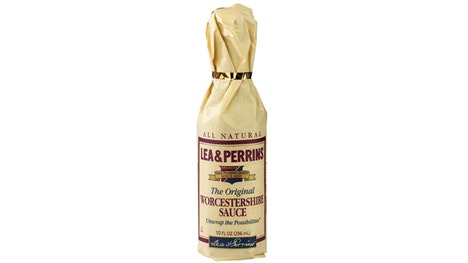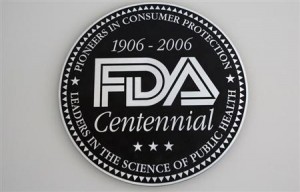 For people trying to wade though nutrition labels and choose healthy options, a front-of-package food label that boils down nutrition information to a single “score” may be the most user-friendly approach, a new study suggests.
For people trying to wade though nutrition labels and choose healthy options, a front-of-package food label that boils down nutrition information to a single “score” may be the most user-friendly approach, a new study suggests.
In recent years, the fronts of some food packages have been decorated with short food labels, which are intended to briefly summarize a product’s nutrition, and make unhealthy ingredients (such as high levels of saturated fat) highly visible to consumers.
However, there is currently no standard for what information needs to be on these labels, leading to a variety of front-of-package food labeling systems that may confuse consumers, said study researcher Christina A. Roberto, a psychologist and epidemiologist at the Harvard School of Public Health.
Experts say that a single, uniform food label should be adopted, but before this can happen, researchers need to know what works best. The new study attempted to help answer this question by comparing five front-of-package food labeling systems, as well as packages with no label.
More than 1,000 people, about half of whom were actively trying to lose weight, were randomly assigned to view food products with one of the following labels:
A “Facts Up Front” label, which was created by the food industry and contains information about calories, saturated fat, sodium and sugars, as well as any noteworthy vitamins.
A “NuVal” label, a proprietary labeling system that gives products a score from 1 to 100 based on a product’s nutritional quality; higher scores denote healthier products.
A single traffic light symbol, which is colored red, yellow or green based on the healthfulness of the product.
A label depicting multiple “traffic lights,” in which different nutrients get their own red/yellow/green symbol (such as green for saturated fat, but yellow for sodium).
A star system, in which a product is given 0 to 3 stars based on its nutrition quality.
No label
In a simulated online shopping task, participants viewed different soups, cereals, beverages, rice products and ice creams, and were asked to choose which products they would like to eat this week.
The only food labeling system that prompted people to pick healthier soups was the NuVal label, the study found.
When shown two products and asked, “Which is healthier?” the NuVal label, along with the multiple traffic-light label, worked best to help participants identify which product was truly healthier.
However, those who viewed the NuVal label were able to choose the healthier product in half the time as those who viewed the multiple traffic-light label, Roberto said.
Based on these preliminary data, NuVal is probably “the most user-friendly,” Roberto said. The simplicity of the system (with just one number), and the fact that it allows users to compare products with high and low numbers, may be helpful to consumers, Roberto said.
However, much more research is needed to confirm the findings, including studies of “real-world” purchasing scenarios, Roberto said.
In addition, it’s not clear how much front-of-package labels help consumers overall. In the study, the food labels did not help consumers pick healthier cereals, beverages, rice products or ice creams.
However, Roberto argues these labels have a purpose.
“It might not massively shift behavior, but I think it’s still worth informing consumers,” Roberto said. “It might influence behavior some of the time, and that can still have an important and meaningful public health impact.”
And if front-of-package labels were mandatory — as proposed in a recent congressional bill — food companies may be pressured change their products so they are healthier (to get a higher NuVal score, or more “green” traffic lights, for instance).
If a uniform front-of-package label system is rolled out, consumers should be educated regarding how to interpret and use the labels, Roberto said.
The study was presented last week at the American Public Health Association meeting in Boston.
Source: Yahoo News





 incomplete, so it’s impressive that this edible ice cream dish rose to fame after an impromptu act. The ice cream cone gained popularity in 1904 at the St. Louis World’s Fair when Syrian concessionaire, Ernest Hamwi, decided to roll up some of his crisp, waffle-like pastries (also known as zalabia) to help out a neighboring ice cream vendor who ran out of dishes.
incomplete, so it’s impressive that this edible ice cream dish rose to fame after an impromptu act. The ice cream cone gained popularity in 1904 at the St. Louis World’s Fair when Syrian concessionaire, Ernest Hamwi, decided to roll up some of his crisp, waffle-like pastries (also known as zalabia) to help out a neighboring ice cream vendor who ran out of dishes. to a positive outcome, but a revolutionary one.’ In 1965, scientist Dr. James Schlatter was working on an anti-ulcer drug when he went to lick his finger to pick up a piece of paper. His finger tasted sweet, so he traced back his steps and realized that the sweet-tasting substance was aspartame. Today, this popular low-calorie sweetener (which is about 200 times sweeter than sucrose) can be found in many popular foods.
to a positive outcome, but a revolutionary one.’ In 1965, scientist Dr. James Schlatter was working on an anti-ulcer drug when he went to lick his finger to pick up a piece of paper. His finger tasted sweet, so he traced back his steps and realized that the sweet-tasting substance was aspartame. Today, this popular low-calorie sweetener (which is about 200 times sweeter than sucrose) can be found in many popular foods. preparing a batch of butter drop cookies for her guests at the Toll House Inn in Massachusetts, Ruth Wakefield decided to stick pieces of a NESTLÉ® chocolate bar into the cookie dough, expecting it to dissolve once baked. Instead, the chocolate maintained its shape. NESTLÉ® quickly caught wind of the discovery and placed Wakefield’s recipe on their chocolate bar wrappers, where it still remains today. In 1997, to honor the popular recipe’s origin, Massachusetts designated the chocolate chip cookie as its official state cookie. If you ever need some validation that failure can lead to success, take at look back at the beginnings of corn flakes. In 1898, W.K. Kellogg (who later became the founder of Kellogg’s) and his brother, Dr. John Harvey Kellogg, accidently produced a batch of flaked wheat berry after attempting to make granola. The Kellogg brothers then decided to experiment by flaking corn and the rest is history.
preparing a batch of butter drop cookies for her guests at the Toll House Inn in Massachusetts, Ruth Wakefield decided to stick pieces of a NESTLÉ® chocolate bar into the cookie dough, expecting it to dissolve once baked. Instead, the chocolate maintained its shape. NESTLÉ® quickly caught wind of the discovery and placed Wakefield’s recipe on their chocolate bar wrappers, where it still remains today. In 1997, to honor the popular recipe’s origin, Massachusetts designated the chocolate chip cookie as its official state cookie. If you ever need some validation that failure can lead to success, take at look back at the beginnings of corn flakes. In 1898, W.K. Kellogg (who later became the founder of Kellogg’s) and his brother, Dr. John Harvey Kellogg, accidently produced a batch of flaked wheat berry after attempting to make granola. The Kellogg brothers then decided to experiment by flaking corn and the rest is history. back at the beginnings of corn flakes. In 1898, W.K. Kellogg (who later became the founder of Kellogg’s) and his brother, Dr. John Harvey Kellogg, accidently produced a batch of flaked wheat berry after attempting to make granola. The Kellogg brothers then decided to experiment by flaking corn and the rest is history.
back at the beginnings of corn flakes. In 1898, W.K. Kellogg (who later became the founder of Kellogg’s) and his brother, Dr. John Harvey Kellogg, accidently produced a batch of flaked wheat berry after attempting to make granola. The Kellogg brothers then decided to experiment by flaking corn and the rest is history. In the early 1800’s, a man by the name of Lord Sandys appointed chemists John Lea and William Perrins to the task of recreating a recipe he had tasted in Bengal. Lea and Perrins attempted the sauce, but did not like the result, so they left the sauce in jars in a cellar. Two years later, the two stumbled across the sauce, decided to taste it and found something amazing: it actually tasted good. Today, Lea & Perrins Worcestershire Sauce is aged in a wooden cask for 18 months and is a popular dressing on meats and salads.
In the early 1800’s, a man by the name of Lord Sandys appointed chemists John Lea and William Perrins to the task of recreating a recipe he had tasted in Bengal. Lea and Perrins attempted the sauce, but did not like the result, so they left the sauce in jars in a cellar. Two years later, the two stumbled across the sauce, decided to taste it and found something amazing: it actually tasted good. Today, Lea & Perrins Worcestershire Sauce is aged in a wooden cask for 18 months and is a popular dressing on meats and salads. became domesticated, possibly around 5,000 B.C. To transport the animal milk, the milk was often placed in sacks made from the stomachs of animals. It’s believed that the bacteria as well as the acidity from the lining of the stomachs prompted the milk to coagulate, forming the beginnings of yogurt.
became domesticated, possibly around 5,000 B.C. To transport the animal milk, the milk was often placed in sacks made from the stomachs of animals. It’s believed that the bacteria as well as the acidity from the lining of the stomachs prompted the milk to coagulate, forming the beginnings of yogurt.

 New mothers are to be offered up to £200 in shopping vouchers to encourage them to breastfeed their babies.
New mothers are to be offered up to £200 in shopping vouchers to encourage them to breastfeed their babies.


 For people trying to wade though nutrition labels and choose healthy options, a front-of-package food label that boils down nutrition information to a single “score” may be the most user-friendly approach, a new study suggests.
For people trying to wade though nutrition labels and choose healthy options, a front-of-package food label that boils down nutrition information to a single “score” may be the most user-friendly approach, a new study suggests.

